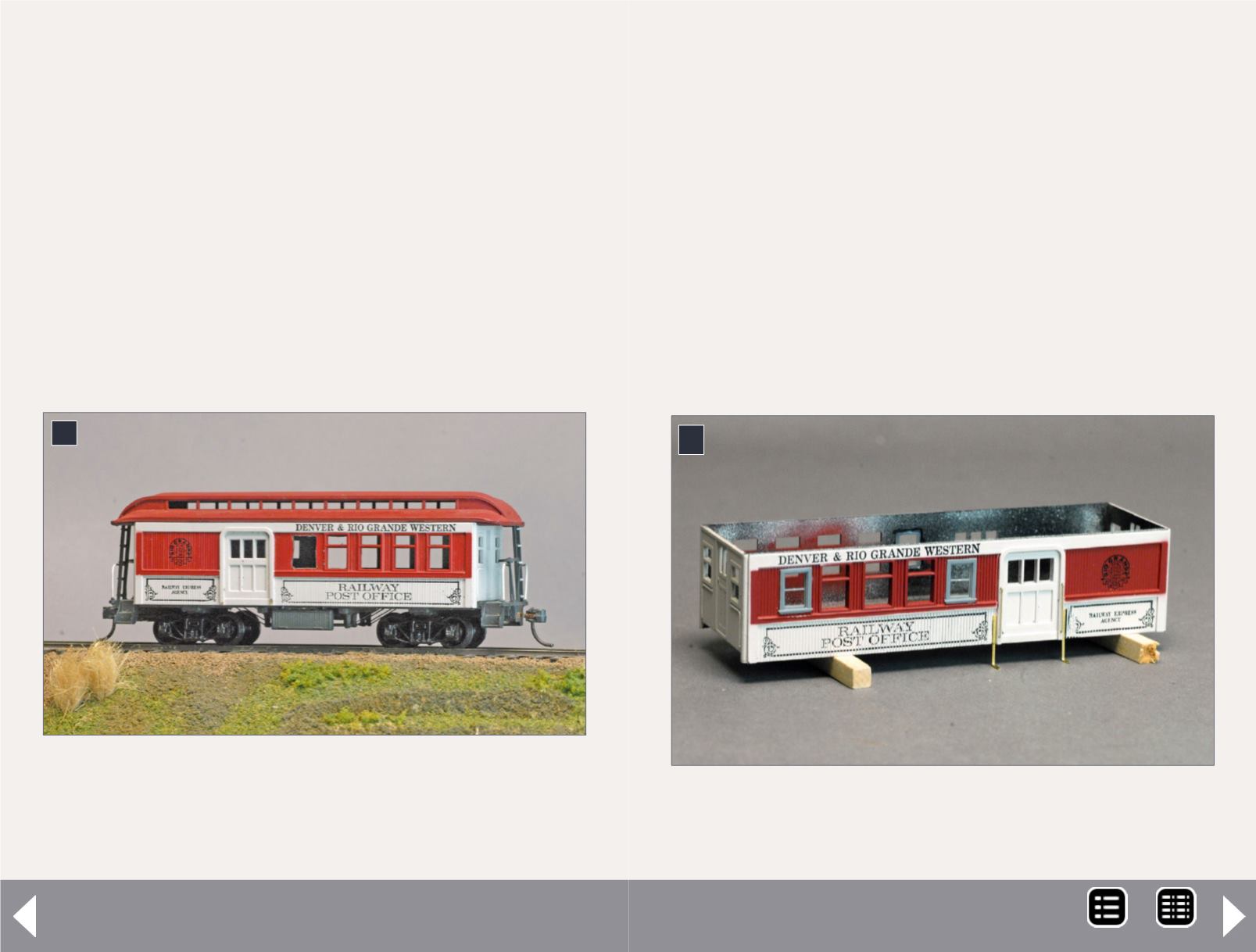
roof with the cupola and baggage end closest to the viewer,
and the same convention applies later to the work on #3.
I had already started hogging out one of the window openings
when I photographed [4]. These cuts were started by measuring
the rough opening on the Tichy Part No. 8068, 18” x 28” Work
Car windows, and scribing the siding. A small drill, about 1/16”,
made the first holes in the car body, then a sharp X-Acto #11
blade cut the balance of the plastic from the opening, followed
by some needle file action for the final trim. I repeatedly test-fit-
ted the window moldings and used a flat needle file to clean up
the openings and bring them to their final required dimensions.
Although I removed the vertical mullions to better reflect the
car’s existing windows, it’s obvious the new windows don’t
4
4. The stock MDC Overton combine that was the start
of TB&T #2 rattled around my roster for decades before
being put to a better use. I had already started cutting
an extra window opening when this photo was shot.
Logging cabooses - 3
match the old. This is right in line with logging railroad practice –
they’d use whatever they had on hand to do the job. In my opin-
ion, it adds some interest to a semi-oddball piece of rolling stock.
After the windows were in place I added hand grabs made from
.015” brass wire next to the baggage compartment doors. This
wire was just a handy piece I had in my scrap box rather than
being selected for a specific reason. Likewise, some flat brass
stock was used to add the step supports shown with the hand
grabs in [5]. Medium-viscosity CA secured the parts in place.
From this point on in the project, I supported the car body with
wood scraps to avoid damaging the fairly delicate step hang-
ers. I sized the hangers to accommodate steps and kickplate
backers made from 2x10 scale lumber that was colored with an
5
5. Two additional windows, brass wire hand grabs and
brass strip step supports had been added by this point.
MRH-Oct 2014


